


















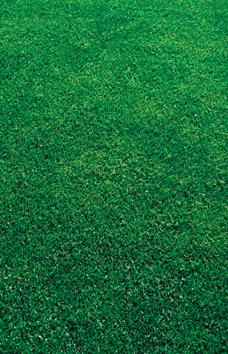



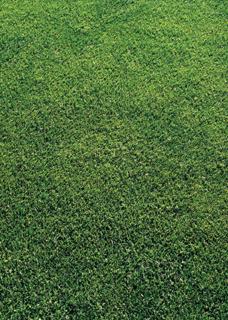





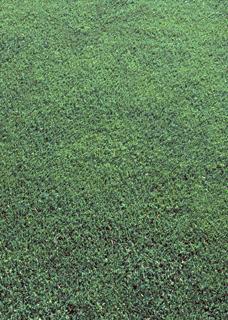































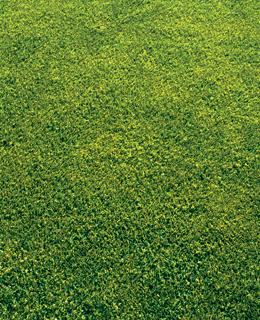






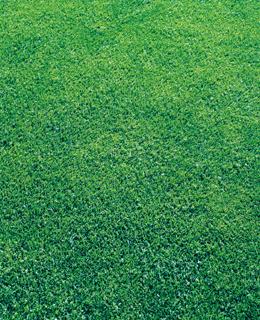





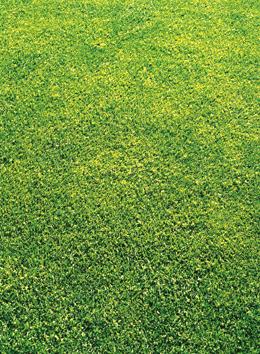

The development of grass varieties for amenity uses is a long-term, costly and sophisticated business. Plant breeding (crossing, selecting and conducting trials) typically takes a decade or more, before varieties are ready for release into Governmental registration and Industry performance trials. Subsequent investment in production, stock-holding, manufacturing and marketing is expensive. The exploitation and utilisation of the superior varieties made available by this process require expert guidance and advice.
The purpose of Turfgrass Seed is to report comprehensive results of available varieties in trials designed to test suitability for:
Use in winter sports pitches, such as football and rugby fields, and municipal recreation areas (Sports Uses Trials).
Use in lawns, summer sports pitches, tennis courts, turf and general landscaping (Lawns Landscaping, Summer Sports and Turf Trials).
Use in the intensive management seen on golf and bowling greens (Greens, Close Mown Trials).
Turfgrass Seed presents the best available interpretation of correctly designed, accurately analysed and independently supervised trials to our collective customer, the professional user of high quality amenity grass cultivars.
The Turfgrass trials are conducted in Bingley, West Yorkshire.
BSPB is the trade association, based at Ely in Cambridgeshire, which represents the interests of companies with plant breeding and seeds supply businesses in the UK. Companies can participate as Full Members or Associates and the Society caters for businesses with large or small turnovers.
The major functions of BSPB include:
• Acting on behalf of plant breeders to Licence and collect Royalties for the production of seed of protected varieties by third parties.
• Representing the interests of its members opposite Government and the European Commission.
• Co-ordinating agreements with independent trialling organisations to facilitate the production of recommended and descriptive lists of varieties.
The BSPB Amenity Committee comprises representatives of all the major breeders developing new cultivars for customers in the UK. Its objectives include the long term:
• Coordination and funding of independent amenity variety trialling.
• Continuity of the integrity of Turfgrass Seed as a source of impartial and valid information to buyers and users of amenity grass seed.
The lists contained in this booklet are designed to enable users of Turfgrass Seed to evaluate the suitability of different cultivars for various amenity uses. Information for the major turfgrass species is presented in the form of numerical scores. In each column, larger numbers indicate a higher score for the relevant characteristic. For instance, cultivars with a score of 8.0 for shoot density would be expected to produce denser turf than those with a score of 7.0.
The only exception to this general rule is the rating for colour. On this scale higher numbers are darker green. These colour scores are descriptive, to help with colour matching when blending varieties in mixtures. They are not merit ratings and in this case larger numbers do not indicate a higher merit score.
Users should read the text regarding the selection of grasses for each table to determine which grasses best suit their particular needs. Cultivars of the major turfgrass species have been placed in order of suitability for particular uses. The characteristics that have been used to determine this ranking order have been shaded. Where more than one characteristic has been used, a mean has been calculated and added to the table. When calculated, this mean has been placed within the shaded area, to the right of the characteristics used in its calculation.
Cultivars at the top of each list may not be the best cultivars for every use. Users should identify which characteristics are most important for their intended use and then select cultivars accordingly.
The tables are numbered according to their applicability to different end uses, thus:
L General lawn and landscaping
G Golf and bowling greens and other close mown situations
Seed of all cultivars named should be available in the UK this year but in smaller amounts where shown as LA (Limited Availability). The full names and addresses for the main seed suppliers representing grasses in the tables are presented on page 28. For grasses where no main agent is identified, users should contact BSPB for further information.
The tables have been split into two sections to give a main table and a new cultivar table. The latter section is reserved for cultivars that have been tested in only the most recent set of trials. The scores in this section of the tables should be regarded with less certainty than the scores in the main sections of the tables. Please note that ratings are not directly comparable among species and uses.
The information presented in the current Turfgrass Seeds booklet is from trials conducted at the STRI. As with any trial of living material, the performance of the cultivars may vary in commercial management.
Visual Merit
Visual merit is an overall measure of the suitability of the sward for its potential use. Visual merit is a combination of sward density, leaf width, disease resistance, colour and other factors which could influence appearance such as cleanness of cut.
shoot Density
In most applications of amenity grass a dense sward is required, especially when a uniform and true surface is needed, such as golf greens. The number of shoots per unit area is assessed to give a measure of sward density of the sown species.
liVe GrounD CoVer
The live ground cover is regarded as more important than shoot density in winter sports turf. The ground cover of the sown species is recorded monthly during the application of artificial football wear to determine wear tolerance.
slow re-Growth
Mowing accounts for the majority of the cost of maintaining amenity grass. During the growing season (April to October) the sward height is measured immediately prior to each cut.
Fineness oF leaF
The leaf width of different varieties of grasses varies, especially for perennial ryegrasses and smooth-stalked meadow-grass. Fine leaves are desirable in fine turf and ornamental lawns. This assessment is not undertaken for Chewings fescues, hard & sheep’s fescues, slender creeping red fescues or strong creeping red fescues where there is little difference among these fine-leaved grasses.
Cleanness oF CuttinG
Trials are monitored for differences in cleanness of cutting among cultivars. If differences are seen each variety will be scored for cleanness of cutting.
Disease resistanCe
At a time when the usage of pesticides and the products available for use on amenity grasses are declining, disease resistance is of ever increasing importance. All trials are monitored for disease and scored when significant disease infections occur.
Cultivars are assessed for genetic colour in both summer and winter. This is a relative assessment with scores indicating how light or dark a grass is compared to the other varieties in trial. Lower numbers indicate a lighter coloured grass, higher numbers a darker coloured grass. It should be noted that colour will vary depending on weather conditions, management, and fertiliser use.
reCoVery
The winter sports turf trial is scored for two months following the application of artificial football wear to give an indication of individual varieties ability to recover from wear. Higher scoring varieties are less likely to need intensive renovation in the closed season.
Perennial ryegrass (Table S1)
Smooth-stalked meadow-grass (Table S2)
Tall fescue (Table S3)
Tufted hair-grass (Table S4)
Applications
Winter sports pitches
Football and Rugby pitches
Municipal sports areas
Other intensively used areas
The perennial ryegrass cultivars in Table S1 (pages 6 – 7) are ranked on the mean of live ground cover and visual merit during wear. These characteristics are important for sports pitches receiving intensive wear during winter, such as football and Rugby pitches.
Users should identify the particular properties that are important in their individual situations and choose cultivars that score well for those characteristics. In football and Rugby pitches for example, it may be better to choose a cultivar with reduced susceptibility to red thread, if this can be done without compromising too much on wear tolerance. Where good appearance is required before wear, or in low wear situations, good shoot density, fineness of leaf and cleanness of cut scores will be important.
In all wear situations regular over-seeding can have beneficial results. It is strongly advised that this forms part of the end of season renovation programme. Also the addition of new grasses through over-seeding during the playing season will help maintain ground cover.
Cultivars of smooth-stalked meadow-grasses are shown in order of their performance under football-type wear for inclusion in winter pitches (Table S2). Once established, smoothstalked meadow-grass can be as hard wearing as perennial ryegrass and usually has better tolerance of close mowing.
Its rhizomes give good recovery from wear and some drought tolerance. However, establishment of this grass is slow and best results can only be achieved if at least 12 months is left between sowing and use, Table S2 (page 8). Trials are sown in spring with wear being applied the following autumn.
Generally, cultivars of tall fescue form turf that would be acceptable for many coarse turfgrass uses. However, they are no substitute for perennial ryegrass in normal turf situations in the UK. Tall fescues are slower in establishment, coarser in leaf texture, and as a result, less attractive in appearance. They may however, have a place under dry or low fertility conditions. Tall fescues have also been used successfully where fairly tall (15 – 20cm) but still erect swards are desirable, such as the grassed areas surrounding airfields. New improved varieties of this grass type, some with rhizomes, are starting to become available. These produce acceptable lawns but still do not match perennial ryegrass for wear tolerance.
Tufted hair-grass is tolerant of damp and shady conditions and has been included in some seed mixtures for stadiums. This grass can accumulate a little more organic matter at the surface than some of the traditional sports grasses like perennial ryegrass.
Perennial ryegrass (Lolium perenne)
Table S1s
Tetraploid ryegrasses
The cultivars in both Tables S1 and S1s are grown in the same trial. The ratings on Table S1s are directly comparable with those on Table S1.
Table S2
Smooth-stalked meadow-grass (Poa pratensis)
- = Data not available
Series L
Lawns, Landscaping, Summer Sports and Turf Trials (Mown at 10-15mm)
Perennial ryegrass (Table L1), Smooth-stalked meadow-grass (Table L2), Chewings fescue (Table L3), Slender creeping red fescue (Table L4), Strong creeping red fescue (Table L5), Hard and Sheep’s fescue (Table L6), Bentgrasses (Table L7), Tall fescue (Table L8) and Tufted hair-grass (Table L9)
Applications
Professional and domestic lawns
Fairways
Cricket
Tennis courts
General landscaping
Perennial ryegrasses are ranked in Table L1 (pages 11-12), smooth-stalked meadow-grasses in Table L2 (page 13), tall fescues in Table L8 (page 18) and tufted hair-grass in Table L9 (page 18) on their mean performance for shoot density, fineness of leaf, slow regrowth and visual merit.
Fescues are ranked in Tables L3 to L6 (pages 1417) on their mean performance for shoot density and visual merit.
Bentgrasses are ranked in Table L7 (page 17) on the mean of their shoot density, fineness of leaf and visual merit.
In addition to differences among cultivars, there are some general sub-species differences among the red fescues. Chewings fescues in comparison with slender creeping red fescues tend to be more resistant to diseases. They also tend to “green up” faster in the spring. The slender creeping red fescues are more drought tolerant and maintain colour and growth better in the autumn and early winter. Both Chewings and slender creeping red fescues are more tolerant of closer mowing than strong creeping red fescues and produce denser turf at all heights of cut.
Cultivars of hard fescue are shown in order of suitability for use in fine turf in Table L6. These grasses, along with the sheep’s fescues may be used for fine turf in very dry or infertile conditions.
They are also suited to low maintenance conditions and may be of value in environmentally sensitive areas, particularly where the natural grasses are of the same species. Please note that sheep’s and fine leaved sheep’s fescues tend to grow in different directions and as such do not produce a uniform sward. Also, most of these grasses have been found to be fairly intolerant of wear and as a result should only be considered for use in ornamental and low maintenance areas. In contrast Quatro sheep’s fescue has been found to be fairly wear tolerant. In golf and bowling green trials at the STRI this cultivar has been shown to have comparable wear tolerance to Chewings and slender creeping red fescues.
Generally, cultivars of tall fescue form turf that would be acceptable for many coarse turfgrass uses. However, they are no substitute for perennial ryegrass in normal turf situations in the UK. Tall fescues are slower in establishment, coarser in leaf texture, and as a result, less attractive in appearance. They may however, have a place under dry or low fertility conditions. Tall fescues have also been used successfully where fairly tall (15 – 20cm) but still erect swards are desirable, such as the grassed areas surrounding airfields. New improved cultivars of this grass type, some with rhizomes, are starting to become available. These grasses produce lawns of acceptable quality, particularly where fertility and water might be restricted.
Tufted hair-grass is naturally adapted to damp and shady conditions. In turf the grass forms a dense upright sward, which is fairly tolerant of wear.
Perennial ryegrass (Lolium perenne)
Continued
LA = Limited availability
- = Data not available
LA = Limited availability - = Data not available
LA = Limited availability
Table L4
Slender creeping red fescue (Festuca rubra litoralis)
LA = Limited availability
Strong creeping red fescue (Festuca rubra rubra)
LA = Limited availability Fa* = Freely Available
Lawns, Landscaping, Summer Sports and Turf Trials (Mown at 10-15mm)
Table L6
Hard and Sheep’s fescue (Festuca longifolia and Festuca ovina)
Hard fescue (Festuca longifolia)
Sheep’s fescue (Festuca ovina)
Table L7
Bentgrasses (Agrostis spp) Cultivar
bent (Agrostis capillaris)
Highland bent (Agrostis castellana)
Creeping bent (Agrostis stolonifera)
LA = Limited availability
Tufted hair-grass (Deschampsia caespitosa)
- = Data not available
Bentgrasses (Table G1), Chewings fescue (Table G2), Slender creeping red fescue (Table G3), Perennial ryegrass (Table G4), Hard, Sheep’s and Strong creeping red fescues (Festuca spp.) (Table G5)
Applications
Golf greens
Bowling greens
Ornamental lawns
Cultivars of bentgrass species are listed in order of their suitability for use in very close mown turf, such as golf and bowling greens, mown at 4mm, in Table G1 (page 20). Currently there are no cultivars of velvet bentgrass listed for Turfgrass Seed.
For very fine turf, such as golf greens and bowling greens, the finer and denser cultivars of Agrostis capillaris appear to perform best under traditional UK management and growing conditions. Higher management inputs are required to maintain creeping bentgrasses.
Velvet bentgrass (Agrostis canina) produces exceptionally dense turf and generally has better drought tolerance than the other bentgrass species. However, it also produces more thatch than other bents and this would need to be controlled to maintain the very good surface, which this grass can produce.
Cultivars of Chewings fescue and slender creeping red fescue are shown in order of their suitability for use in very close mown turf, such as (golf and bowling greens, mown at (5 mm), in Tables G2 (page 21) and G3 (page 22). As for the bentgrasses, the order was determined from the mean of each cultivars visual merit and shoot density scores. These grasses can produce acceptable greens under restricted watering and fertility regimes that would limit the performance of some bentgrasses.
Table G4 (page 23) describes the performance of perennial ryegrass cultivars that have been evaluated under close mowing (5mm summer and 7mm winter). These grasses should be used in situations where the need for quick establishment and wear tolerance is combined with a degree of close mowing. They should not be seen as a replacement for bentgrasses or fine fescues in golf or bowling greens.
The cutting heights described above may be relaxed if required by turf management or climatic conditions.

Table G1
Bentgrasses (Agrostis spp.)
Browntop bent (Agrostis capillaris)
Creeping bent (Agrostis stolonifera)
Cultivars
LA = Limited availability - = Data not available
Cultivars
LA = Limited availability - = Data not available
LA = Limited availability
Table G4
Perennial ryegrass (Lolium perenne)
Cultivars
LA = Limited availability
Table G5
Hard, Sheep’s and Strong creeping red fescues (Festuca spp.)
The performance of strong creeping red fescues, hard fescues and Sheep’s fescues have been evaluated as a group for use in close mown turf (Table G5). These grasses tolerate a degree of close mowing and can form an attractive close mown turf. They could be used as an alternative to, or in combination with, Chewings and slender creeping red fescue for many fine turf uses. However, they will not match superior Chewings and slender creeping red fescue cultivars for use in high quality golf greens. Sheep’s fescues tend to form noticeable growth patterns (whorls) in fine turf. This is not unattractive but can make them difficult to stripe up with a mower.
Table G5
Continued
Hard fescue (Festuca longifolia)
Sheep’s fescue (Festuca ovina)
Strong creeping red fescue (Festuca rubra rubra)
Cultivars
LA = Limited availability
Miscellaneous grasses
Miscellaneous Grasses
Other Grasses (Table M1)
Table M1 lists the availability of minor turfgrass species. The performance of these grasses may differ from the more traditional amenity grass species and these differences have yet to be fully determined. They should, therefore, be treated with some caution as their growth characteristics and susceptibility to disease will differ from more commonly used grass species.
Miscellaneous Grasses
Other Grasses (Table M1)
Rough stalked meadow-grass (Poa trivialis) Note 1
Notes:
1 Comparable with smooth-stalked meadow-grass
- = Data not available
Cultivar Species Tables
Abalina (LA) Smooth-stalked meadow-grass S2 L2
AberFleece Sheep’s fescue L6
AberRegal Browntop bent L7 G1
AberRoyal Browntop bent G1
AberWin Perennial ryegrass S1 L1
Absolom Slender creeping red fescue L4 G3
Acapulco (LA) Perennial ryegrass S1 L1
Agreement Perennial ryegrass S1
Aiglon Slender creeping red fescue L4 G3
Alathea Perennial ryegrass S1 L1
Alboka Perennial ryegrass S1 L1
Alison Perennial ryegrass S1 L1 G4
Altivo Perennial ryegrass S1 L1
Angelina Perennial ryegrass S1 L1
Aniston Perennial ryegrass S1 L1 G4
Annalena Chewings fescue L3 G2
Annecy Perennial ryegrass S1 L1
Antoinette Chewings fescue L3 G2
Antonella Perennial ryegrass S1 L1 G4
Aporina Slender creeping red fescue L4 G3
Archibal Slender creeping red fescue L4 G3
Armani Tall fescue S3 L8
Arrowtown Browntop bent L7 G1
Arya (LA) Smooth-stalked meadow-grass S2
Balkan Chewings fescue L3 G2
Baniva Slender creeping red fescue L4
Baradona Perennial ryegrass S1 L1
Barbasten Perennial ryegrass S1 L1
Barcampsia Tufted hair-grass S4 L9
Barcesar Tall fescue S3 L8
Barchip Chewings fescue L3 G2
Barcristalla Perennial ryegrass S1 L1
Barcrown Slender creeping red fescue L4 G3
Bargkamp (LA) Perennial ryegrass S1 L1
Bargreen II Chewings fescue G2
Bariris Smooth-stalked meadow-grass S2 L2
Barjessica Strong creeping red fescue L5
BarKing Browntop bent L7 G1
Barlegant Hard Fescue L6
Barlexas II Tall fescue S3
Barlicum Perennial ryegrass S1 L1
Barlineus Chewings fescue L3 G2
Barniblick (LA) Chewings fescue L3 G2
Barnoustie Slender creeping red fescue L4 G3
Barolympic Perennial ryegrass
Baromario Perennial ryegrass
Barorlando Perennial ryegrass
S1 L1 G4
S1 L1
S1 L1
Barpatria (LA) Chewings fescue L3 G2
Cultivar Species
Tables
Barpearl Slender creeping red fescue L4 G3
Barpersie Perennial ryegrass S1 L1
Barprium Perennial ryegrass S1 L1 G4
Barquess Slender creeping red fescue L4 G3
Barrisse Strong creeping red fescue L5 G5
Barsignum Perennial ryegrass S1 L1 G4
Barthierry Perennial ryegrass S1
Barustic Strong creeping red fescue L5
Barzico Perennial ryegrass S1 L1
Beacon Hard Fescue L6
Becca Smooth-stalked meadow-grass S2 L2
Beckham Perennial ryegrass S1 L1
Belleaire Chewings fescue L3 G2
Benji Strong creeping red fescue L5
Berlioz 1 Perennial ryegrass S1 L1
Beudin Slender creeping red fescue L4 G3
Bluenote Smooth-stalked meadow-grass S2 L2
Bodega Chewings fescue L3 G2
Bogart Chewings fescue L3 G2
Bonnie Perennial ryegrass S1 L1
Boreal Strong creeping red fescue L5
Borluna Slender creeping red fescue G3
Borsala Smooth-stalked meadow-grass S2 L2
Brittany Chewings fescue L3 G2
Cabrio Perennial ryegrass L1 G4
Caldris Chewings fescue L3 G2
Calico Perennial ryegrass S1 L1
Calliope Chewings fescue G2
Camanette Chewings fescue L3 G2
Cameron Perennial ryegrass S1 L1
Cantando Slender creeping red fescue L4 G3
Capriccio Chewings fescue L3 G2
Carnac Perennial ryegrass S1 L1
Cathrine Slender creeping red fescue L4 G3
Cathy Slender creeping red fescue L4 G3
Cezanne Slender creeping red fescue L4 G3
Chardin Perennial ryegrass S1 L1 G4
Charles Browntop bent L7 G1
Charlize (LA) Chewings fescue L3
Charlotte Slender creeping red fescue L4 G3
Chloe Perennial ryegrass S1 L1 G4
Claudine Perennial ryegrass S1 L1
Cleek Browntop bent L7 G1
Clementine Perennial ryegrass S1 L1 G4
Cleopatra Perennial ryegrass S1 L1
Clochette (LA) Perennial ryegrass S1 L1 G4
Cobra nova Creeping bent G1
Coletta Perennial ryegrass L1
Cultivar Species
Tables
Columbine Perennial ryegrass S1 L1 G4
Conni Smooth-stalked meadow-grass S2 L2
Coptic (LA) Slender creeping red fescue G3
Corail Strong creeping red fescue L5
Corsica Perennial ryegrass L1
Creepstar Perennial ryegrass S1 L1
Crystal Hard Fescue L6
Cyrena Perennial ryegrass S1 L1 G4
Dagita Tufted hair-grass S4 L9
Dakisha Smooth-stalked meadow-grass S2 L2
Dancing Chewings fescue L3 G2
Dauntless Smooth-stalked meadow-grass S2 L2
Debussy 1 Tall fescue S3 L8
Desanto Tufted hair-grass S4 L9
Deshade Tufted hair-grass S4 L9
Dickens 1 Perennial ryegrass S1 L1 G4
Dipper Strong creeping red fescue L5
Django (LA) Perennial ryegrass S1 L1
Double Perennial ryegrass S1s
Dumas 1 Hard Fescue L6
Duparc Perennial ryegrass S1 L1
Duranova Perennial ryegrass S1 L1
EG Resistus Perennial ryegrass S1 L1
Egmont Browntop bent L7 G1
Elva Perennial ryegrass S1 G4
Enigma Smooth-stalked meadow-grass S2
Escapade Perennial ryegrass S1 L1 G4
Esparina Chewings fescue L3 G2
Esquire Perennial ryegrass S1 L1
Essence Perennial ryegrass S1 L1
Essential Tall fescue S3 L8
Estelle Perennial ryegrass S1 L1 G4
Eterlou Perennial ryegrass L1
Ethan Perennial ryegrass S1 L1
Etienna Perennial ryegrass S1 L1
Eurobeat Perennial ryegrass S1 L1
EuroCarina Chewings fescue L3 G2
Eurocool Perennial ryegrass S1 L1
EuroCordus Perennial ryegrass S1 L1
Eurodiamond Perennial ryegrass S1 L1
Eurogala (LA) Perennial ryegrass S1 L1 G4
Euromagic (LA) Perennial ryegrass S1 L1
EuroMarie Slender creeping red fescue L4 G3
Europitch Perennial ryegrass S1 L1
Eurosport Perennial ryegrass S1 L1
Evelyn (LA) Perennial ryegrass L1
Eventus Perennial ryegrass S1 L1 G4
Evora Smooth-stalked meadow-grass S2 L2
Fabian Perennial ryegrass S1s
Fancy Perennial ryegrass S1
Fandango Perennial ryegrass S1 L1
Filius Chewings fescue L3 G2
Fiona (LA) Perennial ryegrass S1
Flagstick (LA) Creeping bent G1
Flanell Perennial ryegrass S1 L1
Flicka (LA) Perennial ryegrass S1
Foxhound Tall fescue
Cultivar Species Tables
Gildara Perennial ryegrass S1 L1
Gima Chewings fescue L3 G2
Gladys Perennial ryegrass S1 L1
Grande II Tall fescue S3 L8
Granditte Tall fescue S3 L8
Greenheaven Tall fescue S3 L8
Greenmile Chewings fescue L3 G2
Greenplanet Perennial ryegrass S1
Greenplay Smooth-stalked meadow-grass S2 L2
Greensky Perennial ryegrass S1 L1
Greensleeves Chewings fescue L3 G2
Greenway Perennial ryegrass S1 L1 G4
Groundforce Perennial ryegrass S1 L1
Guinevere (LA) Perennial ryegrass S1 L1
Gwynett Perennial ryegrass S1 L1
Hardtop Hard Fescue L6 G5
Hastings Strong creeping red fescue L5 G5
Hayley Perennial ryegrass S1
Hecata (LA) Perennial ryegrass S1 L1
Heidrun Strong creeping red fescue L5
Heritage Browntop bent G1
Highland Highland bent L7
Highnote Chewings fescue L3 G2
Hiphop Chewings fescue L3 G2
Howden Browntop bent G1
Humboldt Chewings fescue L3 G2
Isadora Smooth-stalked meadow-grass S2 L2
Jasperina Strong creeping red fescue L5
Jazlynn (LA) Slender creeping red fescue L4
Jazzy (LA) Strong creeping red fescue L5
Joanna Chewings fescue L3 G2
Joker (LA) Smooth-stalked meadow-grass S2 L2
Jorvik Browntop bent L7 G1
Joshua Strong creeping red fescue L5
Jubilee EG Perennial ryegrass S1 L1
Julius Smooth-stalked meadow-grass S2 L2
Kasinski Slender creeping red fescue G3
Kolossos Strong creeping red fescue L5
Lamar (LA) Perennial ryegrass S1 L1
Lancelot Perennial ryegrass S1 L1
Lautrec Perennial ryegrass S1 L1
Laverda Strong creeping red fescue L5 G5
Lavinia (LA) Smooth-stalked meadow-grass L2
Limousine Smooth-stalked meadow-grass S2 L2
Lincolnshire Smooth-stalked meadow-grass S2 L2
Lionel Perennial ryegrass S1 L1
Lize Perennial ryegrass S1 L1
Macdonald (LA) Creeping bent G1
Mackenzie Creeping bent G1
Magitte Strong creeping red fescue L5
Malibu Perennial ryegrass L1
Mandalay Perennial ryegrass S1 L1
Manor Browntop bent L7 G1
Maracas (LA) Strong creeping red fescue L5
Markus Smooth-stalked meadow-grass S2 L2
Martinella Perennial ryegrass S1 L1
S3 L8
Gianna Perennial ryegrass S1 L1 G4
Maryse Slender creeping red fescue L4 G3
Maxima 1 Strong creeping red fescue L5
Cultivar Species
Tables
Meara Perennial ryegrass S1 L1
Melbourne Perennial ryegrass S1 L1
Melisandra (LA) Perennial ryegrass S1 L1
Mellori Strong creeping red fescue L5
Melyane Tall fescue S3 L8
Mentor Hard Fescue L6 G5
Mercitwo Perennial ryegrass S1 L1 G4
Minnelli (LA) Perennial ryegrass S1 L1
Miracle Smooth-stalked meadow-grass S2 L2
Mirador Slender creeping red fescue L4 G3
Mission Chewings fescue L3 G2
Mistral Perennial ryegrass S1
Mocora Perennial ryegrass S1 L1
Monroe Perennial ryegrass S1 L1 G4
Morisot Perennial ryegrass S1 L1
Mumbai (LA) Perennial ryegrass S1 L1
Musette Slender creeping red fescue L4 G3
Musica Chewings fescue L3 G2
Musket Browntop bent G1
Nicole Slender creeping red fescue L4 G3
Nigella Slender creeping red fescue L4 G3
Nightclub (LA) Chewings fescue L3 G2
Nikky Chewings fescue L3 G2
007 DSB Creeping bent L7 G1
Orionette Chewings fescue L3 G2
Pasadena Smooth-stalked meadow-grass S2 L2
Pascal Perennial ryegrass S1 L1
Passion Perennial ryegrass S1 L1
Penelope Perennial ryegrass S1 L1
Pinafore Slender creeping red fescue L4
Piranha Creeping bent G1
Platinum Perennial ryegrass S1 L1
Polka Strong creeping red fescue L5
Pollen Perennial ryegrass L1
Ponyo Perennial ryegrass S1 G4
PowerPlay (LA) Smooth-stalked meadow-grass S2 L2
Proclamation Creeping bent G1
Puritan (LA) Browntop bent G1
Quatro Sheep’s fescue L6 G5
Quintet Strong creeping red fescue L5
Ramona Chewings fescue L3 G2
Record Strong creeping red fescue L5
Regenerate Tall fescue S3 L8
Reggae Slender creeping red fescue L4 G3
Relevant Strong creeping red fescue L5
Reybann (LA) Perennial ryegrass S1 L1
RGT Klaxon Perennial ryegrass L1
RGT Nuance Tall fescue S3 L8
Riptide Creeping bent G1
Rockefeller (LA) Strong creeping red fescue L5 G5
Roseanne Perennial ryegrass S1 L1
Rosmerta (LA) Strong creeping red fescue L5 G5
Rossinante Strong creeping red fescue L5 G5
Runa Strong creeping red fescue L5 G5
Ryder Strong creeping red fescue L5
Sabrena 1 Rough stalked meadow-grass M
Saila Perennial ryegrass S1 L1
Sake (LA) Slender creeping red fescue G3
Cultivar Species Tables
Samanta Slender creeping red fescue L4 G3
Saopaulo (LA) Perennial ryegrass S1 L1
Sarolea Slender creeping red fescue L4 G3
Saulsbury (LA) Browntop bent L7 G1
Sefton Browntop bent L7 G1
Sergei Strong creeping red fescue L5
Seroa Slender creeping red fescue L4 G3
Shazam Perennial ryegrass S1 L1
Singapore Perennial ryegrass S1 L1 G4
Sirtaky Perennial ryegrass L1
Siskin Chewings fescue L3 G2
Skylar Chewings fescue L3 G2
Smirna Slender creeping red fescue L4 G3
Sombrero Smooth-stalked meadow-grass S2 L2
Starlett Tall fescue L8
Starling (LA) Perennial ryegrass S1 L1
Sword Hard Fescue L6
Sybille Slender creeping red fescue L4 G3
Tasida (LA) Slender creeping red fescue L4 G3
Teenie Slender creeping red fescue L4 G3
Teetop Browntop bent L7 G1
Tetraboom (LA) Perennial ryegrass S1s
Tetradry Perennial ryegrass S1s
Tetrafan Perennial ryegrass S1s
Tetragame Perennial ryegrass S1s
Tetragon (LA) Perennial ryegrass S1s
Tetragreen Perennial ryegrass S1s
Tetramagic Perennial ryegrass S1s
Tetrasport Perennial ryegrass S1s
Tetrastar Perennial ryegrass S1s
Tiril Perennial ryegrass S1 L1
Torsion Perennial ryegrass S1 L1
Totoro (LA) Perennial ryegrass S1 G4
Tour Pro (GDE) Creeping bent G1
Traction Smooth-stalked meadow-grass S2
Transate Perennial ryegrass S1 L1
Tratado Perennial ryegrass S1s
Trophy Chewings fescue L3 G2
Turfdreamer (LA) Perennial ryegrass S1 L1
Turfgold Perennial ryegrass S1 L1
Turfway Tall fescue S3 L8
Venice Perennial ryegrass L1 G4
Vermillion Perennial ryegrass L1
Vernon (LA) Perennial ryegrass S1 L1
Vertech Perennial ryegrass S1
Vesuvius Perennial ryegrass S1 L1
Viktorka Slender creeping red fescue L4 G3
Vulcanus Perennial ryegrass L1
Wagner 1 Chewings fescue L3 G2
Xiamara Smooth-stalked meadow-grass S2 L2
Ximena (LA) Smooth-stalked meadow-grass S2
Yvette Smooth-stalked meadow-grass S2 L2
Zeptor Smooth-stalked meadow-grass S2 L2
Zurich Perennial ryegrass S1
The seed merchants listed below are primary agents for grasses listed in this booklet. Short codes have been given so that the grasses listed in the different tables can be cross-referenced with their suppliers.
BAR Barenbrug UK Ltd.
33 Perkins Road, Rougham Industrial Estate, Bury St. Edmunds, Suffolk IP30 9ND Tel: 01359 272000, Fax: 01359 272001
E-mail: info@barenbrug.co.uk www.barenbrug.co.uk
DLF/JNS DLF/Johnsons Sports Seed
Thorn Farm, Inkberrow, Worcestershire, WR7 4LJ
Tel: 01386 790012, Fax: 01386 792715
E-mail: amenity@dlf.co.uk www.dlf.co.uk
DSV DSV United Kingdom Ltd.
Top Dawkins Barn, Upper Wardington, Banbury, Oxon, OX17 1FE
Tel: 01295 758800
E-mail: info@dsv-uk.co.uk
G Germinal GB Ltd.
Camp Road, Witham St Hughs, Lincoln LN6 9QJ
Tel: 01522 868714, Fax: 01522 868382
E-mail: lincoln@germinal.com www.germinal.com
ICL ICL/Everris
P.O.Box 40-4190 CA Geldermalsen
Koeweistraat 4- 4181 CD Waardenburg
The Netherlands
Tel: 00 31 418 655700
Email: simon.taylor@icl-group.com www.icl-sf.com
Names and addresses of other breeders and suppliers, with only a restricted number of varieties in the booklet, are available from the BSPB.
DLF/MM DLF/MM
Thorn Farm, Inkberrow, Worcestershire WR7 4LJ
Tel: 01386 719758
E-mail: mmdesigner@dlf.co.uk www.mm-seeds.co.uk
OAS Origin Amenity Solutions Ltd
1-3 Freeman Court, Jarman Way, Royston, Hertfordshire SG8 5HW
Tel: 01763 255500
RGT RAGT Seeds
Grange Road, Ickleton, Essex CB10 1TA
Tel: 01799 533700 www.ragtseeds.co.uk
SMFR Semences de France
62 rue Léon Beauchamp
59930 La Chapelle d’Armentières, France. Tel: +33 3204 84141, Fax : +33 3204 84162
E-mail: contact@semences-de-france.fr www.semencesdefrance.com
SUT Suttons Consumer Products Ltd.
Woodview Road, Paignton
Devon TQ4 7NG
Tel: 01803 696300
E-mail: retail@suttons.co.uk
TG Top Green
ZA Les Pains, 49320 Les Alleuds, France
Tel: 0033 241 689900, Fax: 0033 241 689901 info@tgsas.fr
British Society of Plant Breeders Limited (BSPB)
BSPB House
114 Lancashire Way Business Park Ely, Cambridgeshire
CB6 3NX
Tel: 01353 653200
E-mail: enquiries@bspb.co.uk www.bspb.co.uk

STRI Group
Bingley, West Yorkshire BD16 1AU
Tel: 01274 565131
Fax: 01274 561891
E-mail: info@strigroup.com www.strigroup.com

To publicise information from the Turfgrass booklet a licence must first be obtained.
“Publication” includes any means by which the materials are reproduced, displayed, used or otherwise made available to any person, including non-exhaustively in print, by projection and by electronic means.
To obtain a licence please contact BSPB directly.
Email: enquires@bspb.co.uk
Phone: 01353 653200